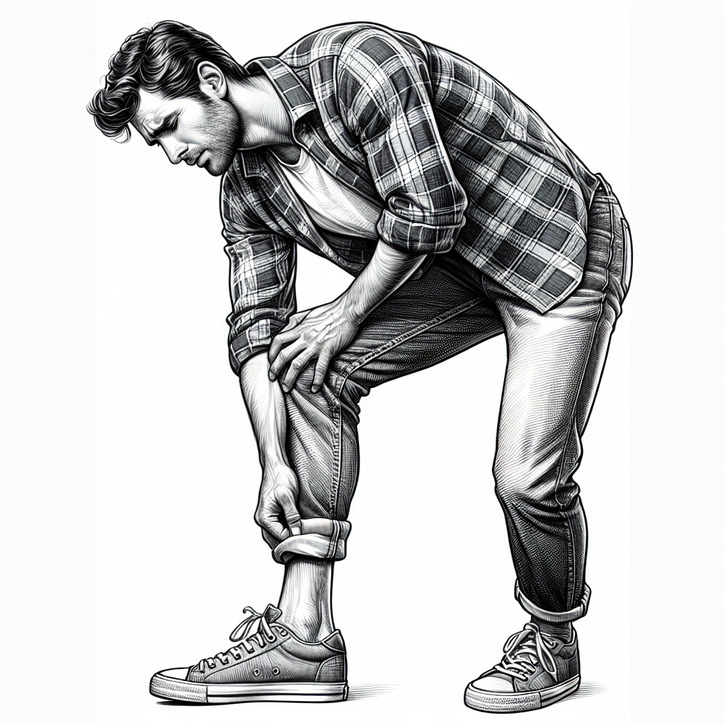This Village-Made Chinese Pain Reliever Eliminates Back And Joint Pain!
When to Seek Medical Help for Knee and Ankle Pain

Introduction to Knee and Ankle Pain
Anyone who's dealt with knee or ankle pain knows how much of a hassle it can be. It’s not just about the discomfort—it’s about how it affects your daily life, from climbing stairs to walking short distances. The good news is that understanding when to seek help can make all the difference. In this post, we’ll break down the common causes of knee and ankle pain, the red flags you shouldn’t ignore, and some practical tips for prevention and treatment.
Common Causes of Knee Pain
Knee pain can come from a variety of sources, each with its own set of symptoms. Think of it as your body sending signals about what’s going on beneath the surface:
- Arthritis: Osteoarthritis is a common culprit, especially as we age. It’s like wear and tear on a well-used machine.
- Ligament injuries: ACL tears are a frequent issue in sports, causing instability and often severe pain.
- Meniscus injuries: These happen from twisting motions, like when you pivot too quickly during activity.
- Overuse injuries: Runner’s knee is a prime example of how repetitive stress can take its toll.
Early recognition is key. Arthritis might start as mild stiffness but can progress if left unchecked. Ligament and meniscus injuries often happen suddenly, making prompt care essential. The sooner you identify the cause, the better your chances of effective treatment.
When to Seek Help for Knee Pain
Let’s cut to the chase: when should you see a doctor? Here are some clear signs:
- Severe pain or immobility: This could indicate fractures, ligament tears, or other serious issues that need professional attention.
- Swelling, redness, or warmth: These symptoms might point to inflammation or infection.
- Persistent symptoms: If rest, ice, and other home remedies don’t help within a week, it’s time to seek advice.
Don’t tough it out too long—your knees will thank you later!
Common Causes of Ankle Pain
Ankle pain often comes from sprains and strains, especially during physical activities. But there are other culprits:
- Arthritis: It doesn’t just affect the knees—it can also cause chronic discomfort in the ankles.
- Tendinitis: Inflammation of tendons is another frequent source of ankle pain.
- Fractures or gout: These can lead to severe pain, especially if not treated promptly.
The sooner you recognize these issues, the better your chances of avoiding long-term problems. For example, prompt treatment for sprains can make a big difference in recovery time.
When to Seek Help for Ankle Pain
Your ankles are worth your attention. Here’s when it’s time to call in the experts:
- Severe pain or inability to bear weight: This could signal fractures or severe sprains.
- Numbness or tingling: These symptoms might indicate nerve compression, which needs immediate care.
- Signs of infection: Redness, warmth, or pus are red flags that shouldn’t be ignored.
If you’re in hot water, don’t wait to seek help. Your mobility is worth it!
Diagnosis and Treatment Options
Doctors typically start with a physical exam, checking for swelling, tenderness, or limited range of motion. Imaging tests like X-rays or MRIs can provide a clearer picture—think of them as high-tech cameras helping to spot fractures or ligament tears. Blood tests might also be necessary if infection is suspected.
As for treatment? It depends on the severity:
- Conservative methods: Rest, ice, compression, and elevation (RICE) can work wonders for mild injuries.
- Medications: NSAIDs like ibuprofen can help reduce pain and inflammation.
- Rehabilitation exercises: Strengthening the muscles around your joints is a great way to speed up recovery and prevent future issues.
- Surgery: In severe cases, it might be necessary to repair damaged tissues.
Prevention Tips
Preventing knee and ankle injuries isn’t rocket science—it just takes a little effort. Here’s how you can stay ahead of the game:
- Strengthening exercises: Focus on the muscles around your knees and ankles—they’re like your joints’ personal bodyguards.
- Proper footwear: Invest in well-fitted shoes with good arch support, especially if you’re active.
- Warm-ups: Don’t skip this step—it primes your muscles and ligaments for action.
- Maintain a healthy weight: Less strain on your joints means less risk of pain down the line.
Remember, prevention is cheaper (and less painful) than treatment!
Conclusion: Taking Charge of Your Joint Health
In short, knee and ankle pain can be caused by a variety of issues, each with its own set of solutions. The key is to recognize the red flags early—like severe pain, swelling, or immobility—and not hesitate to seek help when needed.
Prevention is your best friend here. Strengthening exercises, proper footwear, warm-ups, and maintaining a healthy weight are all steps you can take today to keep your joints happy tomorrow. Don’t wait until the pain becomes unbearable—your body will thank you for being proactive!








